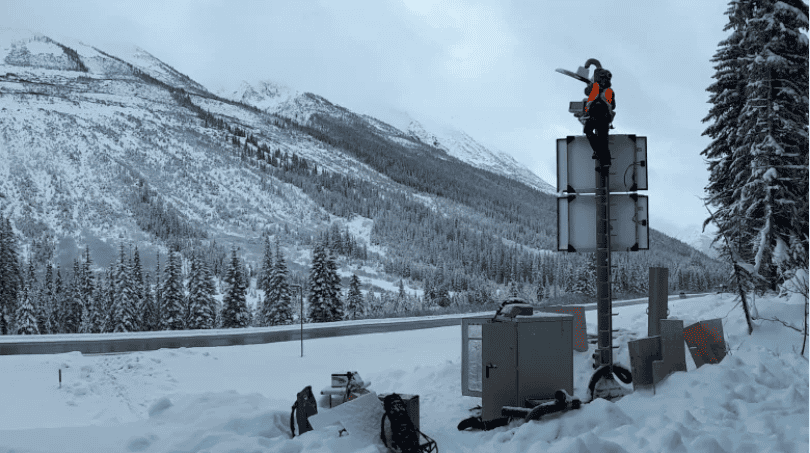
13 infrasound panels and 3 radar detectors are designed to notify avalanche experts of slides
What the Canadian government trumpets as the largest and most extensive avalanche detection network in the world is expected to be put to the test any day now — with the first big dump of snow.
The $3-million system was installed this year in Rogers Pass, a high-mountain pass in Glacier National Park.
The system was designed by the Swiss and uses two technologies to detect avalanches, and notify avalanche experts: 13 infrasound panels which sense low-frequency sound, and three radar detectors.
“So with darkness or during storms it’s difficult to assess what activity is going on,” says Jeff Goodrich, senior avalanche officer with Parks Canada.
“With this new avalanche detection network we will get alerts to which avalanche paths are running.”
The detectors will pick up the slightest sound vibration given off by a powder cloud created when an avalanche hits.
“We’ll be getting texts on our cell phones to let us know avalanche activity is happening,” says Goodrich.
Rogers Pass and the Trans Canada Highway that cuts through it is the busiest rail and road corridor to the Pacific Coast.
It also closes frequently because of avalanches and avalanche control. There are 134 avalanche paths in just a 42 kilometre stretch of the highway over the pass, through Glacier National Park.
In the past, it often closed for days at a time. But Parks Canada spokesperson Shelley Bird says they’ve got that down to an average of about 60 hours a season. And they’re hoping this system cuts that down even more, because the early notification will let crews clear the snow faster.
“It’s an important part of not just connecting Canada from coast to coast, it’s an important part of the economy,” said Bird.
Canadian military involvement
The new detection system is just one of many measures to reduce avalanche risk in the pass. Another involves the Canadian military.
For almost six decades, military gun detachments have blasted Howitzer shells at the mountainsides in Rogers Pass to bring the snow down after big storms.
Two detachments from Manitoba have just arrived in the pass to begin the yearly bombardments.
“They tell me what direction to point my cannon in and we’ll get what they need done,” said Lieutenant Owen Thompson.
The Rogers Pass mission is the longest running in Canadian military history. And this year, the Howitzers will operate alongside high tech.



